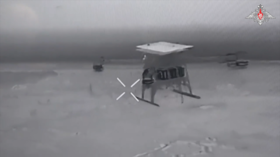Star attraction: How to catch the biggest meteor shower of the year
The biggest meteor shower of the year takes place this month, providing us with an amazing spectacle in the night skies. RT has all the information you need to enjoy the celestial show.
The Geminids is an annual meteor shower that takes place in December, when the Earth passes through a mass of dusty debris that burns up in our atmosphere.
'Revisit the most cherished assumptions': Whole approach to searching for aliens may actually be holding people back from discovering it, says #NASA scientist https://t.co/SZ50fZvPiI
— RT (@RT_com) December 5, 2018
This results in a spectacular light show that looks as though hundreds of shooting stars are flying through the sky. The Geminids contain more mass than any other meteor shower and can include colors such as red, blue and yellow.
The dust debris comes from 3200 Phaethon, a strange rocky object that is referred to as an asteroid but which could be an extinct comet – scientists aren’t sure. Meteor showers tend to originate from comets, making the Geminids all the more unique.
So, how can you watch this amazing show?
The Geminids start on December 4 and peak on December 13, 14 or 15, depending on what time zone you are watching from.
NASA recommends heading outside after 10:30pm, or when the moon has set, and finding the darkest possible spot to watch from. Those living in rural areas will be able to see the show more clearly than those in urban areas, so city dwellers keen to catch the event should consider a trip out of town.
After allowing your eyes to adjust for about 30 minutes, the Geminid meteors will start to appear overhead in clusters, with gaps in between each burst of visual delight.
By 2am, the meteors will increase to about 100 per hour in darker areas, with people living in suburbs expected to see 30-40 per hour, and people in cities seeing even fewer.
READ MORE: Listen to the sky: NASA reveals the sound of wind on Mars (AUDIO)
The Geminids is named after the Gemini star constellation. This is the point in the sky where the meteors appear to be coming from, known as the radiant. However, the meteors don’t actually come from here and will be visible all over the sky, NASA explains.
Think your friends would be interested? Share this story!














